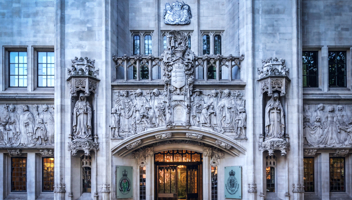Those logging into their Twitter feeds last week will have noticed that the ubiquitous blue bird has been replaced with the stark, black and white branding of ‘X’.
It is understood that the rebrand is intended to bring the platform into line with Elon Musk’s dream of an ‘everything app’ of the same name. Deciding to rebrand where you already have an instantly recognisable mark is always risky, but adopting a new brand based on a single letter, number or symbol creates unique issues in trade mark law. .
The potential protection offered by a registered trade mark is significant. A strong mark will create a monopoly over its use (and use of similar marks) in respect of the same, or similar goods and services. The justification for granting such a monopoly is to allow companies to assure their customers that the goods or services provided under the brand originate from a certain source – a badge of origin. In return for that protection, under the Trade Marks Act 1994, the law sets out some ‘absolute’ grounds for registration of a trade mark. Amongst those grounds is the requirement that the mark is not ‘devoid of distinctive character’.
Here is where the difficulty with brand ‘X’ begins. How can one use of ‘X’ be distinct from another? A mark can either be inherently distinctive or it can acquire distinctiveness through use. To be inherently distinctive, it would have to be considered so in the eyes of an average consumer against the background of the goods or services being protected. To acquire distinctiveness, the applicant must show that the mark is already widely recognised as the sign of their goods and services. In both cases, the public must be capable of connecting the mark with the goods and services being offered. Doing so is necessarily going to be a lot more difficult with only simple letter to rely on.
So, what can be done? A figurative or graphical representation of the letter/number/symbol in the form of a logo can help to bestow distinctive character upon a mark. A search in the UK IPO trade mark register disclosed around 600 live registrations for ‘X’ in the register at the time of writing. Almost all of them are figurative marks. Without figurative representation it is more likely that Elon Musk will have to rely on existing reputation by arguing acquired distinctiveness of his ‘X’. With a rebrand, it is often the case that the applicant cannot rely on their previous track record. It may be the case then that a company would have to operate without the trade mark to build up that reputation before they can register it. They would not get the benefit of protection under the TMA during that time and instead would have to look to the law of passing off, which generally carries a higher threshold to establish infringement.
Even if you were able to register the mark, the ability to enforce that mark against potential infringers is another thing. In a recent case, the European Court was very reluctant to consider two logos using the letter ‘K’ to be confusingly similar, acknowledging to do so would ‘de facto amount to granting a monopoly over one capital letter of the alphabet for a specific range of goods’. The UK IPO has taken a similar approach in a case involving the letter ‘M’ in the past. Practically, the extent of any such protection could only really be relied on where the mark and goods/services are identical.
In summary, those considering a rebrand a la ‘X’ might want to consider whether they are willing to (a) potentially put in the work to acquire distinctiveness; and (b) risk the difficulties in enforcement that come with a weak mark. Some commentators have predicted that Elon Musk could end up in trade mark disputes over use of his ‘X’ for years to come, running up many millions in legal costs.
The IP team at Burness Paull are busy working with clients advising them on all aspects of their branding from clearance searches to enforcement.
Written by
Related News, Insights & Events

Tech & IP Conference 2025: Evolution or Revolution?
07/05/2025 - Everyman Cinema, St James Quarter, Edinburgh
Our annual Tech & IP Conference will explore how businesses can take advantage of change to evolve, build resilience, and leverage competitive advantage through powerful technologies and innovation.

Six in a row for Burness Paull at prestigious IP legal awards
11/04/2025
Burness Paull has won the award for Scotland IP Disputes Firm of the Year for the sixth year in a row at the Managing IP EMEA Awards 2025.

Burness Paull promotes five lawyers to partner
01/04/2025
Burness Paull has promoted five of its lawyers to partner as the firm prepares for further growth in key areas and continues to invest in developing homegrown talent.




